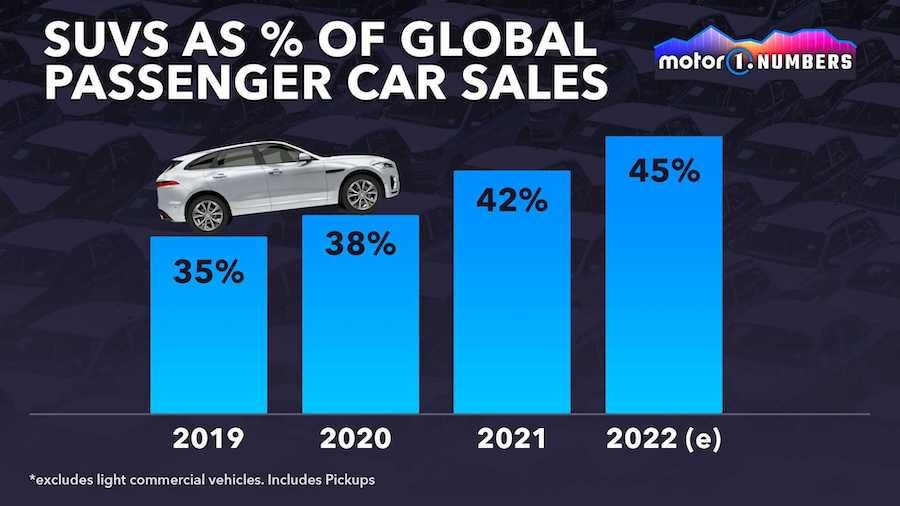If there is one reason why the automotive industry has been able to deal with so many crises in recent years, it's SUVs. More than electric cars, pickup trucks, and the push of emerging markets, these vehicles have become the most popular around the world. They are the engines of revenue growth and, above all, profits. The question is whether this trend will continue forever or if there are threats to this important segment.
Everyone Wants SUVs
In 2021, SUVs accounted for nearly 42 percent of global new vehicle sales, excluding light commercial vehicles. Consumers around the world bought almost 31.9 million of these vehicles, an increase of 13 percent compared to 2020 data. The growth was sensational, especially when compared with the rest of the segments: cars (from segments A to F) increased by 1 percent and pickups by 3 percent.
The reasons for this boom are well known: a wider product offering that includes small SUVs (A-SUV) up to luxury ones (F-SUV); more electrified models; the continued notion that driving in a higher position gives a sense of security, plus the fact that it's easier to get in and out of the vehicle (especially for older drivers).
Last year, preliminary data indicate that SUVs accounted for 45 to 46 percent of global passenger car sales. There were sharp increases in countries such as India, Germany, the United Kingdom, Mexico, Indonesia, Turkey, Malaysia, Vietnam, South Africa, Thailand, and the Philippines. However, demand declined in the United States, the world's second-largest market, down 7 percent. China fell 2 percent to 10.4 million units.
The Threat
However, their rapid growth could be threatened by stricter regulations on pollution and weight.
Even though SUVs have improved considerably in terms of emissions, they are generally still heavy-duty vehicles that require bigger engines. JATO emissions data shows that all SUV categories (except luxury) experienced an average decline in emissions in Europe between 2020 and 2021. However, their total average of 107.9 g/km CO2 is clearly higher than that of city cars, small cars, compacts, and even executive cars, at 76.9, 97.7, 97.6, and 100.8 g/km respectively.
If this gap continues, governments in regions like Europe could start penalizing SUVs not just for emissions reasons, but also for space reasons. An SUV is always bigger and heavier than its automobile equivalent. For example, in Europe, an SUV is 27 percent heavier than a small car. In the United States, it has a mass of 22 percent more than a sedan.
Tax hikes on SUVs could certainly hurt demand and become a serious threat to manufacturers' profitability. The latter are earning more than ever thanks to their ability to manage the shortage of semiconductors by prioritizing SUVs and EVs, the cars that can be sold more easily.
In a Catch-22, SUVs have fueled the high investments required by automakers to move from the internal combustion engine sector to the purely electric one. The numerous electrification plans announced by brands in Europe, the United States, and Asia cannot be realized without the cash flow generated by petrol and diesel SUVs.

Related News

